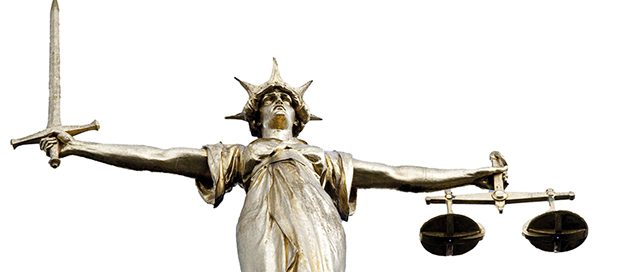Following a well-publicised county court decision on video technology and privacy, Pauline Lam and Michael Stacey discuss what landowners need to be aware of.
The past decade has seen an explosion of affordable video technologies. CCTV and video doorbells linked to our smartphones are commonplace, and drones are available for less than £100. These raise new privacy and data protection implications which landowners need to consider. Privacy arguments are also increasingly a new front in disputes between neighbours.
Fairhurst v Woodard
The recent decision in Fairhurst v Woodard (unreported, Oxford County Court, 12 October 2021) concerned claims for harassment, nuisance and a breach of the Data Protection Act 2018 against a neighbour. The parties used a shared driveway to a car park situated behind their respective houses and rear gardens. The defendant installed four motion-activated cameras with audio recording capabilities. These included a camera with floodlight mounted on another neighbour’s wall pointing towards the shared driveway and the claimant’s side wall and garden wall.
Witness evidence suggested that two of the cameras could record audio up to a distance of 53 feet and 68 feet respectively. Live feeds were available to the defendant on his mobile phone or smart watch and he shared images in a neighbourhood watch WhatsApp group. The claimant argued that the defendant had consistently failed to be honest with her about the cameras, that he had unnecessarily and unjustifiably invaded her privacy by his use of these cameras and that he had intimidated her when she challenged him. The defendant’s actions caused her such distress that she left her home. The defendant denied these claims and argued that he installed his surveillance system to protect his property.
The judge found that the defendant’s conduct amounted to harassment. She also ruled that he had breached the 2018 Act and found the extent of the audio recording capabilities of the cameras detrimental. However, the judge dismissed the claim of nuisance for loss of privacy as she was bound by Fearn and others v Board of Trustees of the Tate Gallery [2020] EWCA Civ 104; [2020] EGLR 14 (currently being appealed to the Supreme Court).
Implications for private landowners
A domestic CCTV installation probably makes the householder a data controller for the purposes of the 2018 Act and the General Data Protection Regulation.
The Information Commissioner’s Office has issued guidance that where domestic CCTV captures images outside the boundary of the home, the operator is subject to the 2018 Act and GDPR. This guidance is based on a European Court of Justice decision that where domestic video surveillance covers a public space, even partially, the exemption covering private individuals who process personal data for “purely personal or household reasons” does not apply.
In practice, most users of video doorbells are likely to capture images beyond their property boundary. Many will have no idea that they are subject to these requirements. Private landowners should review the ICO guidance and consider how their device(s) could impact their neighbours’ right to privacy.
The obligations on a data controller operating CCTV are significant and include, for example, displaying a sign warning that recording is taking place, keeping records of how and why images are being captured, ensuring that the camera angle captures no more than is necessary to achieve your legitimate purposes, ensuring the security of the footage, only keeping the footage for as long as it is needed, responding to any data subject access requests received and considering objections raised from individuals whose images are captured.
In Fairhurst, the judge considered that the extent of the audio capture was more problematic than the video data. Landowners should therefore consider whether audio capture is necessary.
Leaseholders should check whether the location where they plan to install the device would fall within their demised premises, whether their landlord or freeholder’s consent is required, and if the installation may constitute a trespass should the location fall outside of their property as described in the lease.
Implications for owners and occupiers of commercial premises
Although this decision involved private individuals, owners and occupiers of commercial premises should carefully review their obligations and risks when installing video surveillance systems.
Businesses will clearly be data controllers in respect of CCTV/video surveillance cameras and should ensure that they follow the ICO guidance.
The Protection from Harassment Act 1997 has been held to apply to companies. Intrusive and disproportionate video surveillance of an individual may amount to harassment by a business, even if this is incidental to a legitimate purpose of protecting business premises. It is particularly important to ensure that any objections are properly considered.
Drones
The increasing use of drones in both a commercial and domestic context also raises nuisance and privacy issues. While there is guidance from the ICO and the Civil Aviation Authority on the operation of drones, this is an expanding area.
Currently, there is no requirement for operators of smaller drones with a weight of less than 250g to be registered unless they are fitted with a sensor capable of capturing personal data, such as a camera, that is not a “toy”. A recent study made various recommendations for the regulation of drones, although in relation to privacy and noise considerations this was only that they should be tracked in light of increased drone use. The CAA’s update of its Drone and Model Aircraft Code in November 2021 added listening devices and sound recording to its privacy section.
An evolving picture
Legal and regulatory requirements are still developing in response to the evolution of these new technologies and their more widespread adoption. Anyone using smart cameras or drones should mitigate the risk of unwelcome complaints or litigation by considering the potential implications for the privacy of others at the outset, and seeking to minimise any intrusion from their use for legitimate personal or business purposes.
Pauline Lam is an associate and Michael Stacey is a partner at Russell-Cooke








